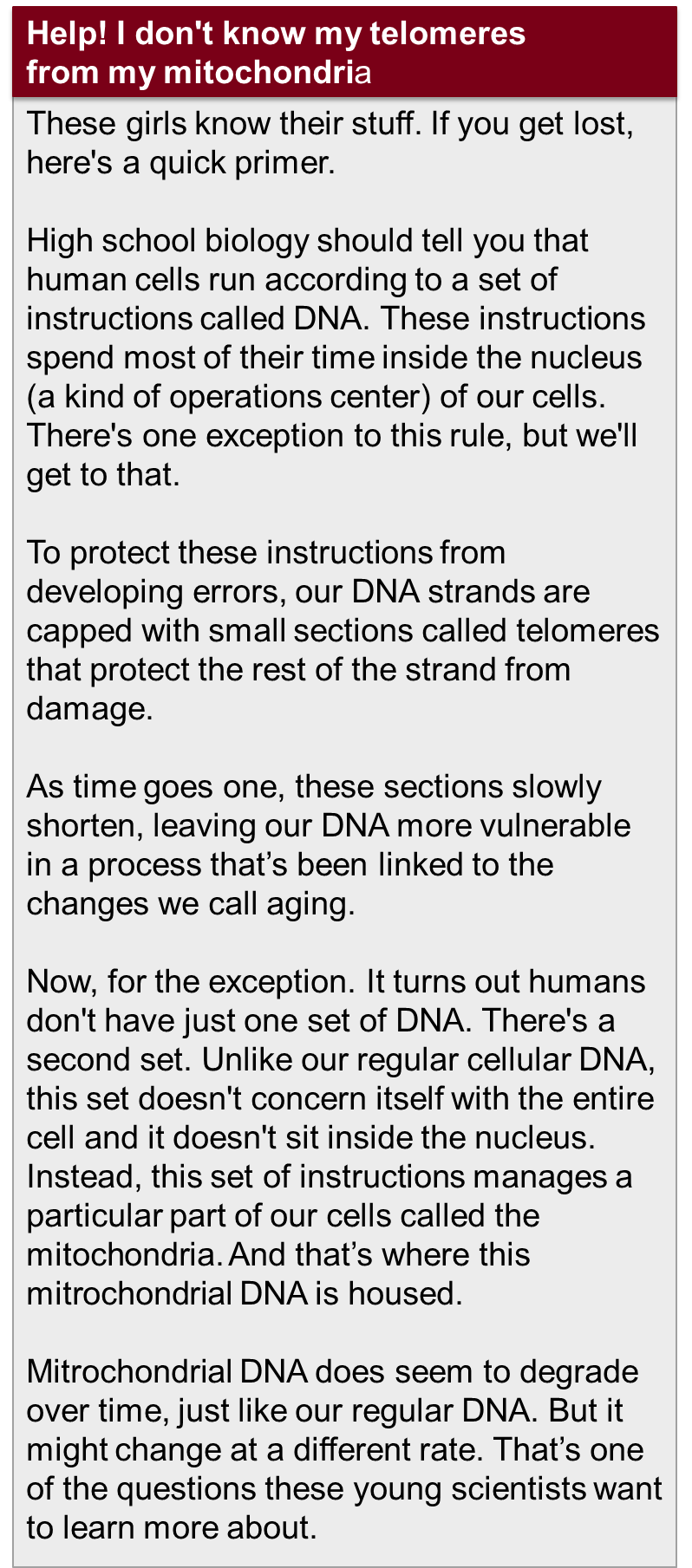A few weeks ago, we got the chance to speak with a group of students at the Reynoldsburg eSTEM Academy. The high school juniors, Jordan Green, Stephanie Smith and Mekedia Setegne, had just submitted their proposal to a science challenge posed on Innocentive, an online network for “crowdsourcing” solutions to complex problems.
The students were proposing a new method to help measure someone’s age from a sample of DNA. Their teacher, Lori Phillips, suggested the project. They also worked closely with Caitlin Rigsby, a student of Ohio State University studying dentistry.
The three students spoke to us from an office at Reynoldsburg loaned by Principal Scott Bennett.
What does your solution do?
The crowdsourcing project asked for a novel new way to find the age of a person based on a DNA sample. We built on methylation and epigentics in telomeres. We did a lot of research. Stephanie was the one who found the rat study with a constant in telomere shortening. There’s a really direct connection between changes in the mitochrondia and age… The mitochrondria’s really neat because the DNA is still there but it’s not as exposed to things like proteins.
Wow, ok. How do you explain this to your parents?
I’ve given up trying to explain it to my mom.
The reason of the breakage of the telomeres is oxidation. If you look for the presence of negative charged oxygen molecules…the electrons escape…and become particles known as free radicals. The electron’s looking for something to attach to, and it attaches to the DNA.
 They had found this constant in rats…we were proposing a study be done with humans to find the constant… to easily and more accurately determine a person’s age based on that mitochrondria DNA.
They had found this constant in rats…we were proposing a study be done with humans to find the constant… to easily and more accurately determine a person’s age based on that mitochrondria DNA.
What was one challenging part of developing your solution?
Most definitely finding the rat study. At the beginning we were kind of jumbled. It’s just the rat study that was the final piece.
What did you learn?
I knew that telomeres shorten with age. But I learned about how they age, when they shorten.
I didn’t even know that we couldn’t determine age through DNA. Then there’s that whole concept: “What is aging?” It was weird to think about. That one electron at a time, we’re dying.
Would you like to work on another project like this?
Absolutely. These guys were a great group. We had a great team. At first, it was overwhelmingly, if these people that have studied for years and years can’t figure it out, how could we? And then when the team started, that went away.
I thought the challenge was interesting too. It was nice having an experience with a real-world problem. To figure out something makes me more confident in myself.
Do you know what you want to do when you’re done with school/college?
Jordan: I don’t know. I love STEM. I love being in a STEM academy. I definitely want to go into science. I’m hoping to…get some scholarships and attend a good science program.
Stephanie: I know I want to go to Ohio State University. I go there next year for college credit. I like the forensics field. Maybe get a forensics degree and then become a prosecutor. If I could be a biology or forensics teacher that’d be even cooler.
Mekedia: I joined eSTEM for the math credits. I’m really focusing on med school. An accelerated program, one I could finish in 6 or 7 years. The brain is so interesting to me. That’s what I’m really interested in.